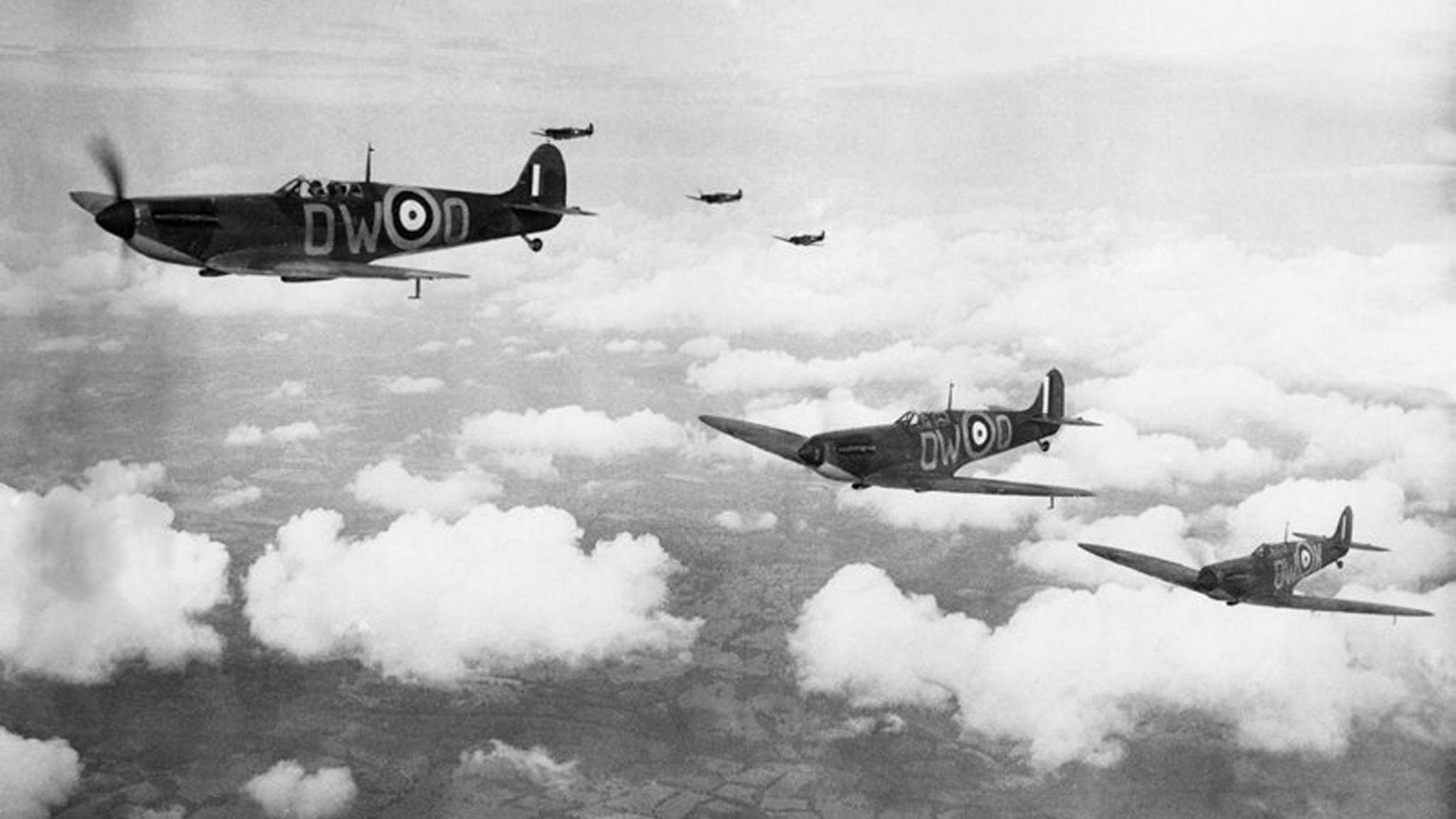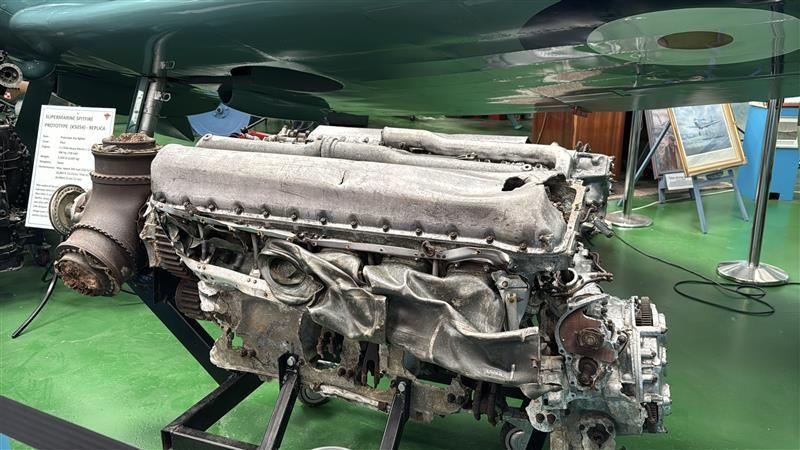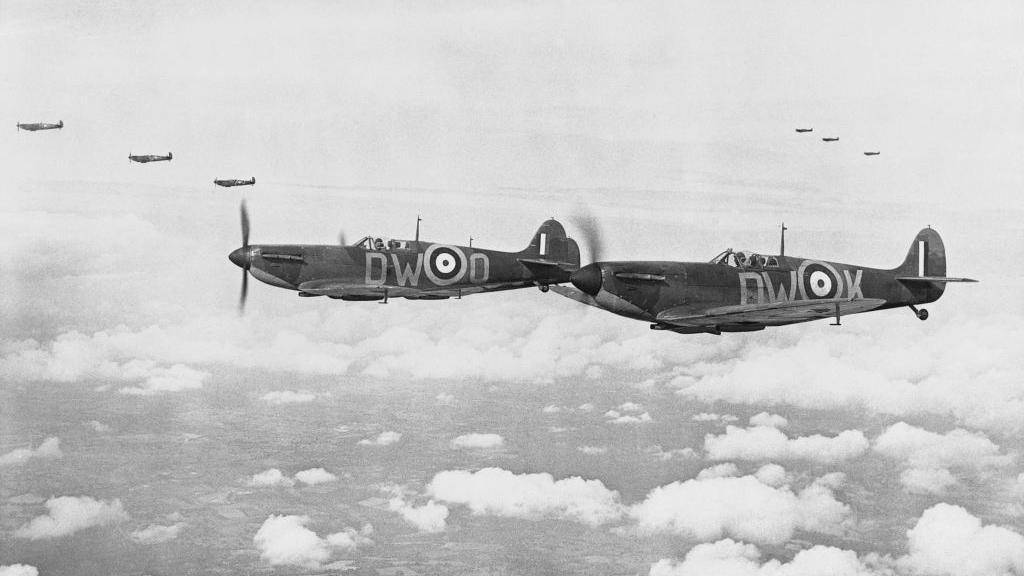The crashed Spitfire which was buried for 30 years

A Spitfire which crashed near Hailsham, East Sussex, was buried for 30 years - now its Rolls-Royce engine is back on display to the public
- Published
When RAF pilot Ted Hall had to bail out of his Spitfire near Hailsham he never would have expected the wreckage to be preserved and the Rolls-Royce engine displayed in a museum 80 years later.
Mr Hall was on a mission over the English Channel in 1942 when oil started "spewing from the engine" and covered his canopy inside the cockpit.
With the guidance of a wingman, he turned back and bailed out over East Sussex.
The Spitfire hurtled into a field at 400mph and buried itself 7m (23ft) into the ground where it lay preserved for more than 30 years. It is now on permanent display at the Tangmere Military Aviation Museum near Chichester.

The Spitfire engine was left largely intact after crashing more than 80 years ago
"You can imagine the situation, there he was over the middle of the Channel and couldn't see anything," said Julian Bridle, the museum's marketing manager. "I imagine that was quite frightening.
"His wingman led him back to the coast and said he could bail out over the coast."
The Spitfire took off from RAF Westhampnett, just two miles from the aviation museum where its engine is on display.
It was previously on display at the Redoubt Museum in Eastbourne but had to be moved when the museum closed down in 2022. It was officially unveiled at Tangmere Aviation Museum on Thursday.
One of those in attendance for the unveiling was Mr Hall's great nephew Michael McManus.

Ted Hall's great nephew Michael McManus came to the unveiling
He said: "These stories have been passed down in our family for a long time, so to be here today is incredible.
"To hear your relation had done this during the war and so many people here today to talk about his story, it makes me feel really honoured to be here representing my family."
Ashley Wooller's father Phil was a boy when he saw the aircraft coming down near his family's farm in Arlington, near Hailsham.

Museum staff unveiling the engine on Thursday
Aviation archaeologists came looking for the Spitfire in 1976 and asked Mr Wooller - then the only person alive who knew where it was - if he could help them recover the plane.
He agreed, but cheekily asked if he could keep the engine.
"My father remembered where it was," said Mr Wooller. "When this engine came out of the ground, it was in immaculate condition because it was covered in petrol and oil.
"All the nuts and bolts were shiny. The very next day, the paint had all peeled off and gone rusty.
"We're all very pleased, father would be pleased as well. It's going to get looked after here."
Follow BBC Sussex on Facebook, external, on X, external, and on Instagram, external. Send your story ideas to southeasttoday@bbc.co.uk , external or WhatsApp us on 08081 002250.
Related stories
- Published19 April
